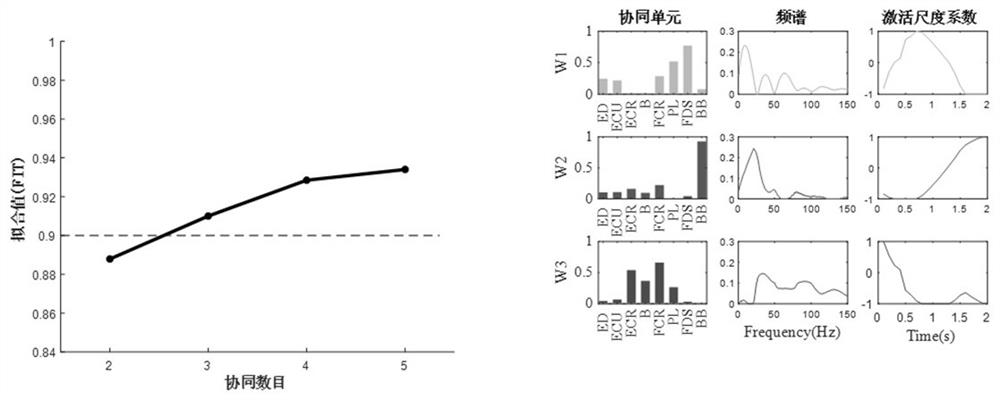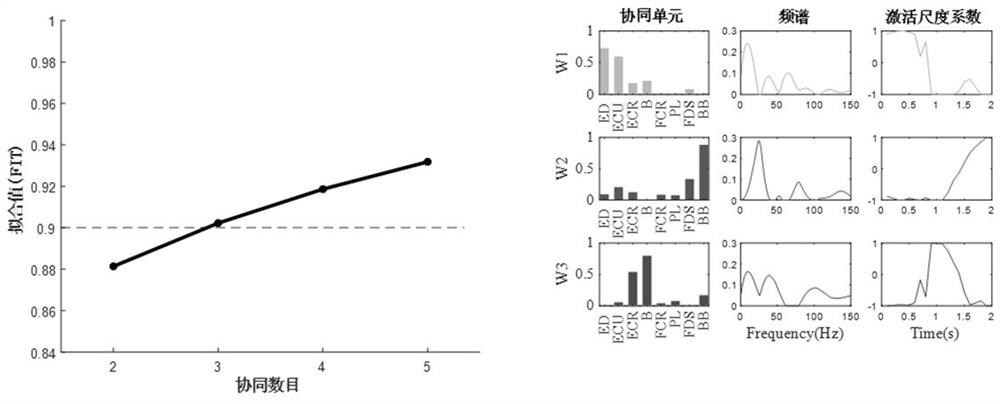Time-frequency-space muscle collaborative analysis method based on wavelet and non-negative tensor decomposition
A technology of non-negative tensor decomposition and analysis method, applied in the field of time-frequency space-time muscle synergy analysis based on wavelet and non-negative tensor decomposition, which can solve the problems of lack of evidence
- Summary
- Abstract
- Description
- Claims
- Application Information
AI Technical Summary
Problems solved by technology
Method used
Image
Examples
Embodiment
[0052] Such as figure 1 As shown, a time-frequency space-time muscle synergy analysis method based on wavelet and non-negative tensor decomposition includes the following steps:
[0053] Step 1, adopt the Wireless EMG wireless synchronous acquisition system to synchronously collect the electromyographic signals of 8 channels;
[0054] Synchronous acquisition of multi-channel surface electromyographic signals during upper limb movement:
[0055] The superficial muscles of the right upper extremity were collected using the electrode patch sensor: biceps brachii (Biceps Brachii, BB), brachioradialis (Brachioradialis, B), flexor carpi radialis (FCR), palmar Palmarislongus (PL), extensor carpi radialis (ECR), extensor digitorum (ED), extensor carpi ulnaris (ECU) and flexor digitorum superficialis ( Flexor Digitorum Superficialis, FDS) as the research object is considered to be the main muscle group involved in wrist movement, which meets the research needs. First, wipe the skin ...
PUM
 Login to View More
Login to View More Abstract
Description
Claims
Application Information
 Login to View More
Login to View More - R&D
- Intellectual Property
- Life Sciences
- Materials
- Tech Scout
- Unparalleled Data Quality
- Higher Quality Content
- 60% Fewer Hallucinations
Browse by: Latest US Patents, China's latest patents, Technical Efficacy Thesaurus, Application Domain, Technology Topic, Popular Technical Reports.
© 2025 PatSnap. All rights reserved.Legal|Privacy policy|Modern Slavery Act Transparency Statement|Sitemap|About US| Contact US: help@patsnap.com



